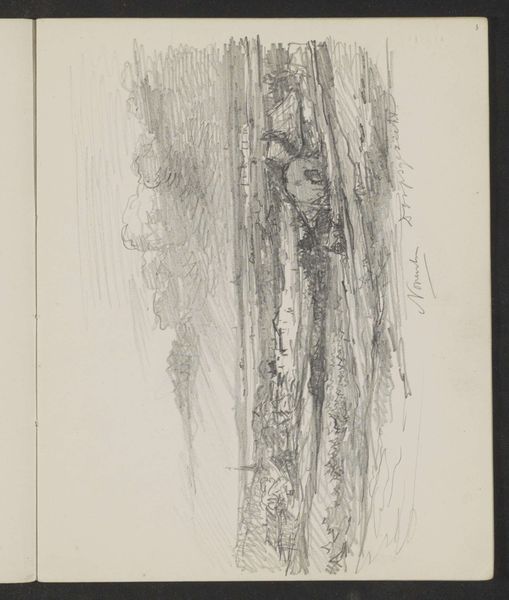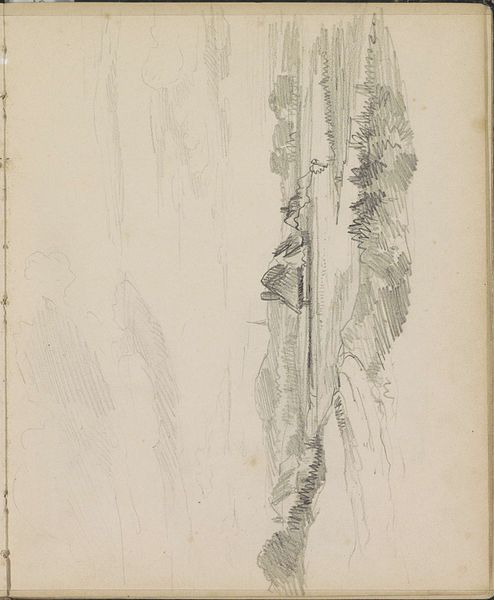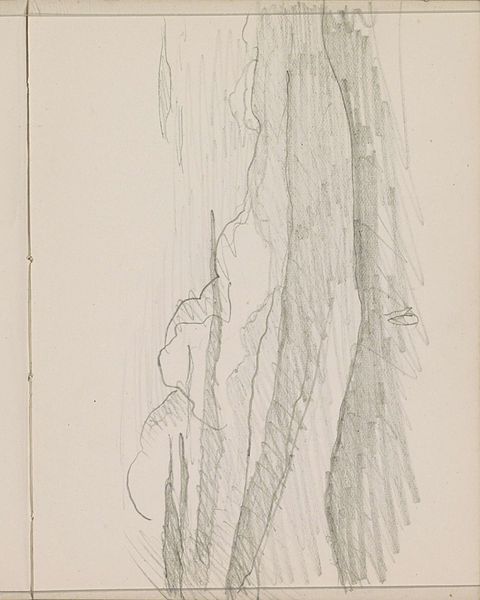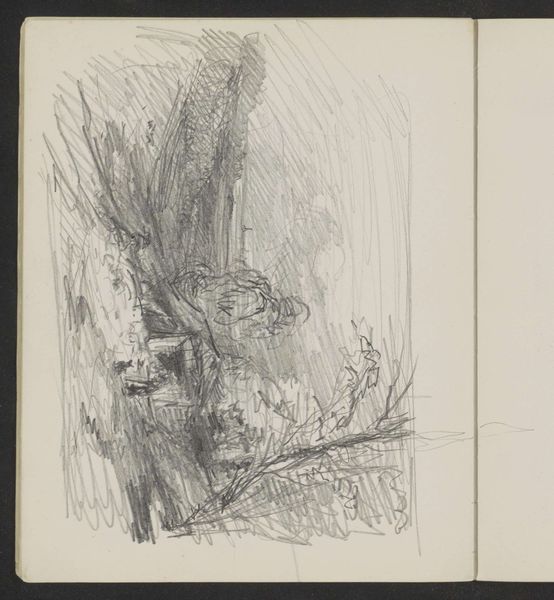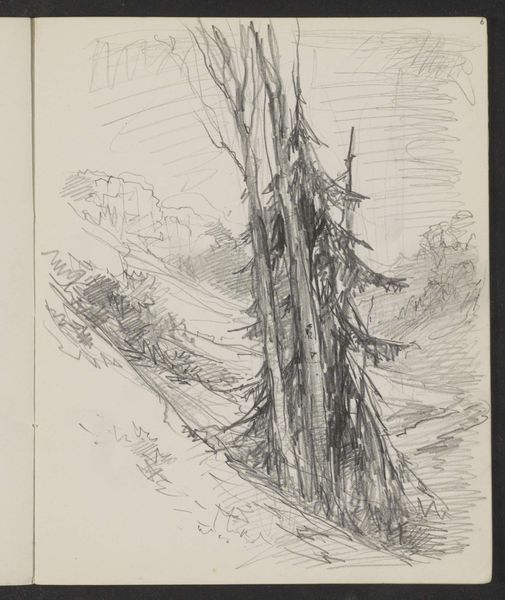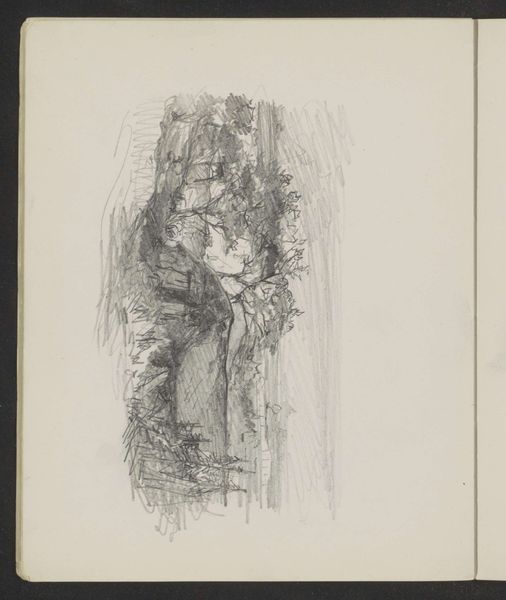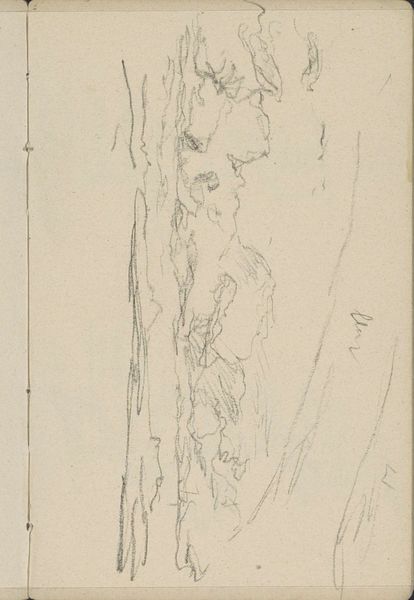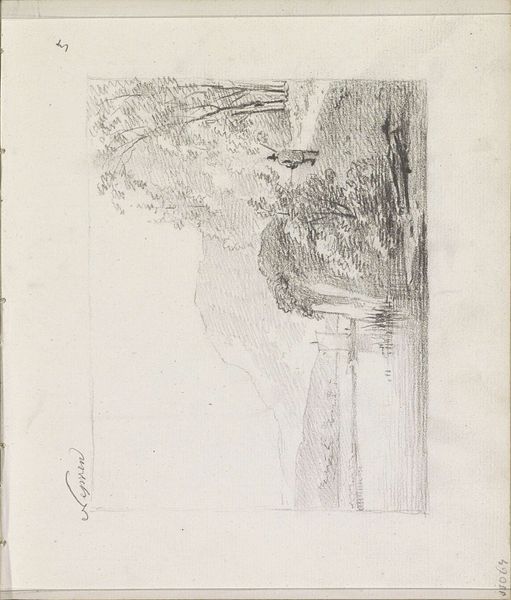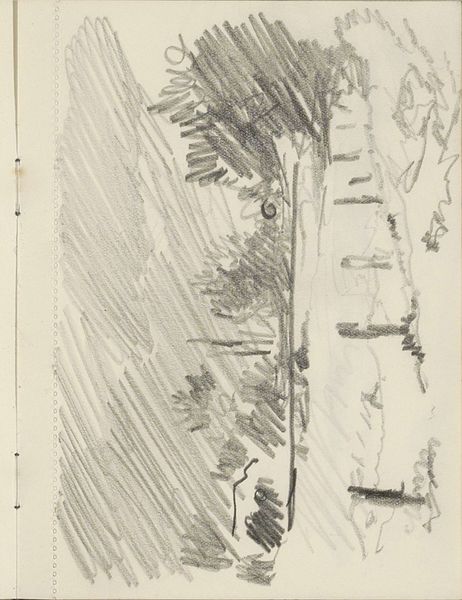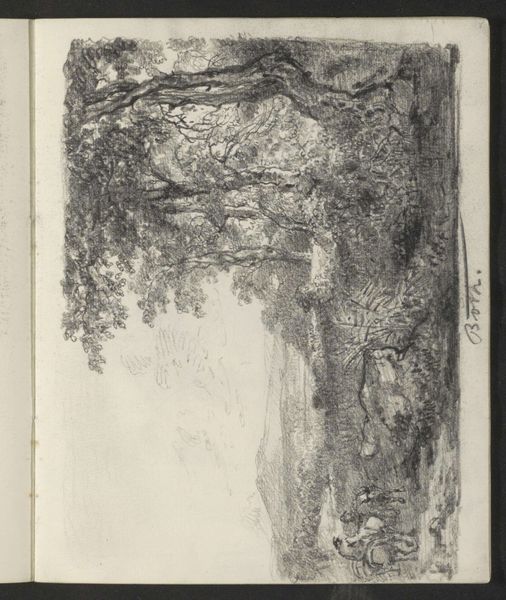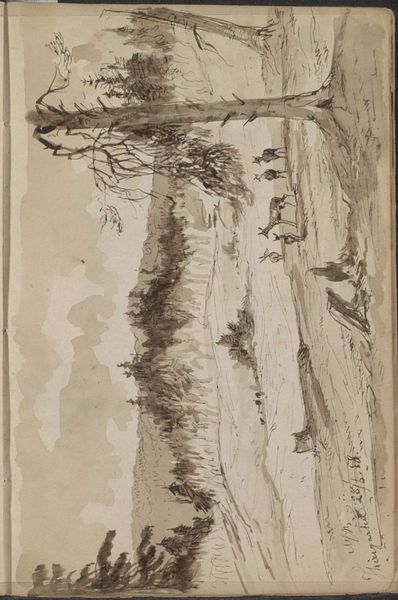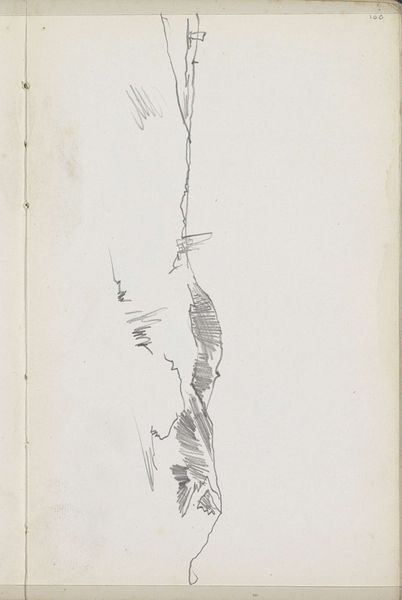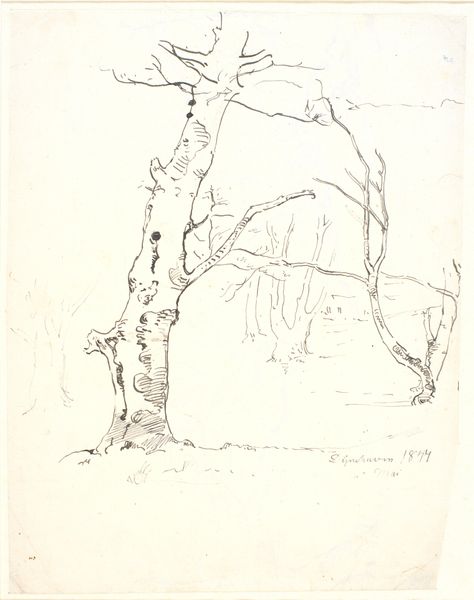
drawing, pencil, graphite
#
drawing
#
landscape
#
pencil
#
graphite
#
realism
Copyright: Rijks Museum: Open Domain
Editor: So, this is "Landschap," a graphite and pencil drawing by Maria Vos, dating from around 1886 to 1890. It's at the Rijksmuseum. It feels quite intimate, almost like a fleeting thought captured on paper. What do you see in this piece, especially given its medium and seeming simplicity? Curator: The simplicity is deceptive. What we see here is not just a tree, but an archetypal image. Trees are universally understood symbols. Look at the texture rendered with graphite; it’s not just bark, it’s the accumulated history etched onto the tree, a cultural memory made visible. Think of ancient myths - sacred groves, the tree of life, and so on. Editor: So, you're suggesting the drawing transcends being simply a study of a tree and enters into symbolic representation? Is that the realism style influencing our perception? Curator: Precisely. The realism anchors it in a specific, observed moment, but Vos’ choice to focus solely on this fragmented view – the bark, the rough texture – invites us to project meaning onto it. The realism does its best to capture texture and light as it might truly be. But its depiction is an emotional rendering of reality, an evocation of our deep-seated connections to the natural world. What feelings arise for you when you look at the textured details? Editor: I feel a sense of age and resilience, of enduring through seasons and time, which your reading amplifies, seeing it as this symbol rather than a simple sketch. Thanks, this was a really interesting perspective. Curator: My pleasure. Consider how these "simple" images continually speak to the complexities of human experience, their continued presence in our artistic vernacular demonstrating enduring motifs in both psychological and cultural landscapes.
Comments
No comments
Be the first to comment and join the conversation on the ultimate creative platform.
